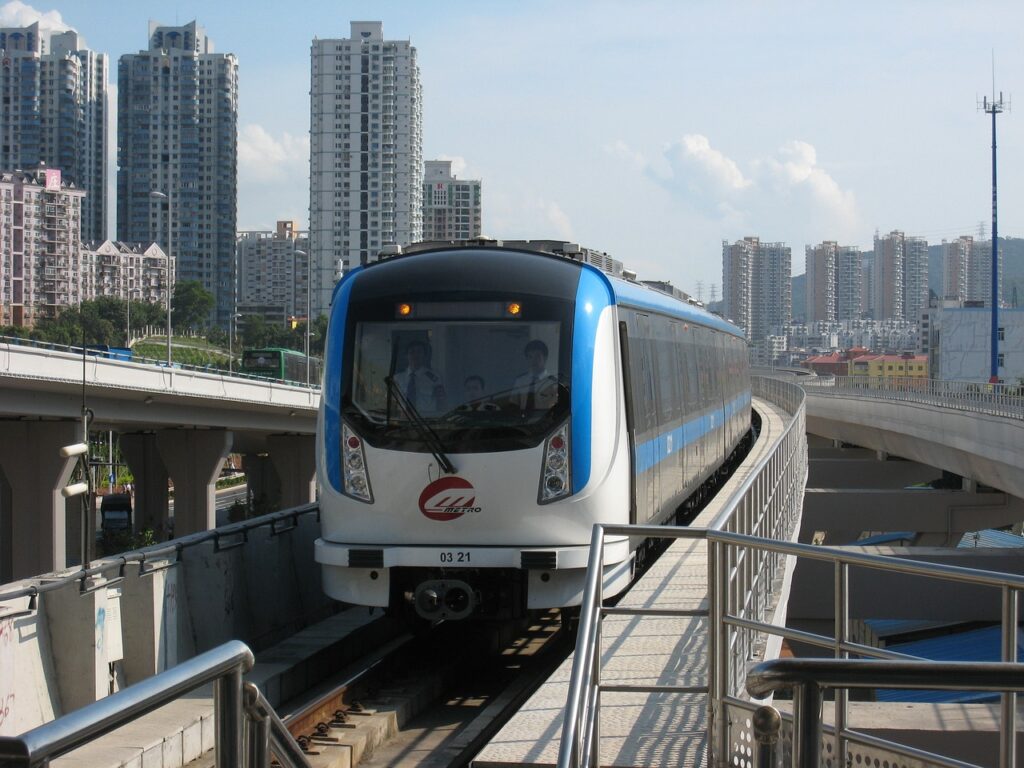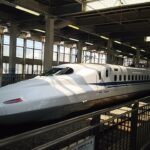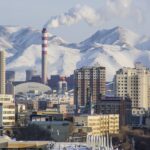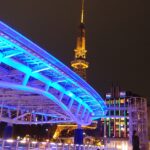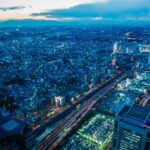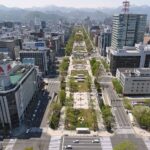Shenzen has one of the best public transportation systems in the entire world. An extensive network of light rail, bus, ferry, and metro systems provides excellent service to the city. With 16 lines and more than 360 stations, the metro system makes it simple to move about the city. There is a robust bus system with reasonable charges. Besides cars, there are also ferries and light rail. While other modes of transportation are primarily used for local travel, the Shenzhen Metro connects the city to its surrounding locations. Shenzhen has several economical and dependable transportation options, making it a great place to visit.
Metro system in Shenzhen – Basic information
There are 16 metro lines in Shenzhen’s wide and effective public transit network, which covers the entire city. Numerous stations are connected to numerous bus routes and intercity train lines, and each line is color-coded. The metro system is open from 6 am to midnight, offering various services during rush hour and off-peak times. Student discounts are offered, and the ticketing system is based on a single-tap card that can be used for numerous trips. The metro is becoming a more and more well-liked mode of transportation in Shenzhen as it broadens.
The lines of the Shenzhen subway system
Line 1 (Luoshu to Airport) – “Luabao line” – GREEN
- During peak hours, trains run every 2 minutes; otherwise, they run every 4 minutes. SZMC (Shenzhen Metro Group) runs the line. Green is the color of Line 1.
Line 2 (Chiwan to Liantang) – “Shekou line” – ORANGE
- At Liantang station, Line 2 and Line 8 are connected. Orange is the color of Line 2 and Line 8, too.
Line 3 (Futian Bonded Area to Shuanlong) – “Longgang line” – sky blue
- The project got underway on December 2005. The color of line 3 is sky blue.
Line 4 (Niuhu to Futian Checkpoint) – “Longhua line” – RED
- During peak hours, trains run every 2.5 minutes, while during off-peak hours, they run every 6 minutes. Underground stations connect Shangmeilin Station to Futian Checkpoint. Since 2010, MTR Corporation (Shenzhen), a division of MTR Corporation, has run the line.
Line 5 (Chiwan to Huangbeiling) – “Huanzhong line” – PURPLE
- The line debuted in 2011. An overall investment of 20.6 billion RMB was needed for Line 5.
Line 6 (Songgang to Science Museum) – “Guangming line” – MINt green/TEAL
- The line opened in August 2020, after construction started in August 2015. From Guangming to SIAT in the north, the Line 6 Branch, also referred to as Branch Line 6, may be found. Teal is the color of Line 6 Branch.
Line 7 (Tai’an to Xili Lake) – “Xili line” – Navy Blue
- The line forms a “V” as it crosses Shenzhen from east to west with a length of 30 kilometers and a total of 27 stations.
Line 8 (Yantian Road to Liantang’s eastern suburbs) – “Yantian line” – ORANGE
- It has a length of 12.3 kilometers with a total of 7 stations. However, while it is in use, Line 2 gets extended by this line.
Line 9 (Qianwan to Wenjin) – “Neihuan line” – grey-brown
- The line, which travels through the districts of Nanshan, Futian, and Luohu, is 36.18 kilometers long.
Line 10 (Shuangyong Street to Futian Checkpoint) – “Bantian line” – Pink
- The line opened in August 2020, after construction started in September 2015. With a length of 29.3 kilometers and a total of 24 stops, Line 10, formerly known as the Bantian Line.
Line 11 (Bitou to Gangxia) – “Airport Express” – MAROON
- The line opened in June 2016, and construction started in 2012. The existing line’s top speed is 80 km/h, however Line 11 travels at a greater speed of 120 km/h.
Line 12 (Zuopaotai East to Waterlands Resort) – “Nanbao Line” – PALE BLUE
- The line opened on November 28, 2022, and construction got underway in 2018.
Line 14 (Gangxia North to Shatian) – “Eastern Express” – YELLOW
- This line is often referred to as the Eastern Express. The line opened on October 28, 2022, and construction got under way in 2018. Shenzhen Metro Group runs the line.
Line 16 (Universiade to Tianxin) – “Longping Line” – Dark blue
- Line 16 travels from Universiade in the heart of Longgang to Tianxin in the northeast. The line opened in December 2022, after construction got underway in 2018.
Line 20 (Airport to Convention & Exhibition) – “Fuyong Line” – Pale Blue
The line opened on December 28, 2021 and travels at a top speed of 120 km/h, which is the same as line 11.
Map of Shenzhen Metro 2024 – Free Download in PDF
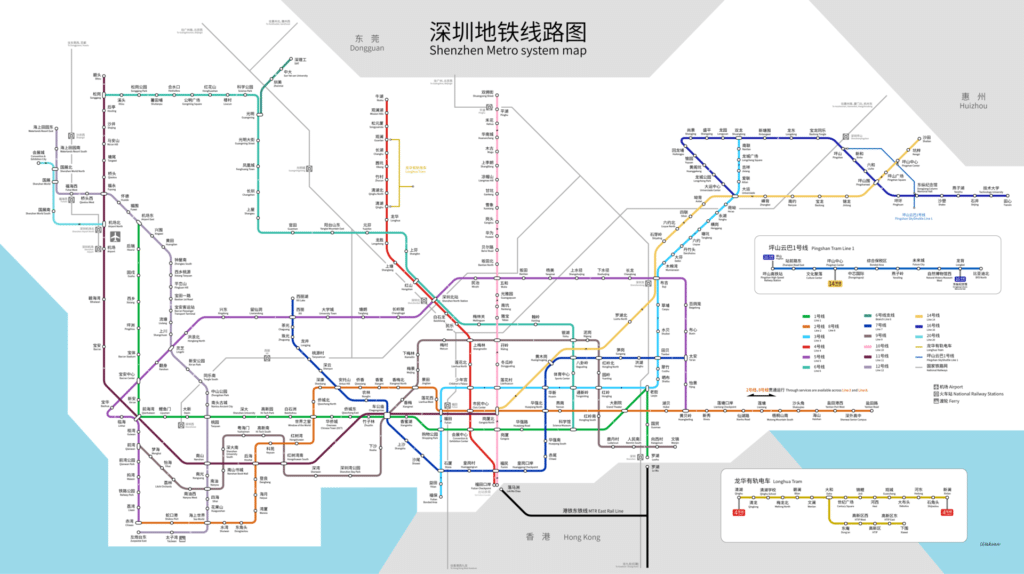
Click on the image and download the map of Shenzhen´s underground system for 2024
You can now download the Shenzhen Metro Map 2024 for free in PDF format. This is a priceless tool for anybody visiting or residing in Shenzhen. It provides information on all of the stations, routes, and connections in the whole Shenzhen subway system. Bus stops, transfer sites, and other significant locations are all noted on this map. Commuters and tourists visiting the city may easily plan their excursions and reach their destinations swiftly and safely thanks to the Shenzhen Metro Map 2024.
Public Transportation tickets – Best types for travelers
The Shenzhen Metro ticket is the most popular kind of ticket. This ticket, which may be purchased as a single trip ticket, a day pass, a monthly pass, and other options, entitles you to travel on the Shenzhen Metro network. Prices can start as low as 3RMB every voyage, depending on the type of ticket and the distance traveled.
Tickets for buses are also offered for longer city tours. The cost of these tickets varies based on the route and duration of your trip and can be purchased at bus terminals or directly from the bus driver.
The Shenzhen Airport Express Train is an excellent option for individuals seeking a more pleasant mode of transportation. This train offers a convenient and comfortable means of transportation between the airport and the city center. At the airport, tickets may be purchased for as little as 20RMB each.
A tourist pass is additionally offered to visitors to Shenzhen. This pass is an excellent choice for people who want to tour the city because it offers three days of unlimited use of the Shenzhen Metro. The pass costs 150 RMB and may be purchased at any Shenzhen Metro station.
Timetables of the Metro system
The Shenzhen Metro system is open every day of the week from 6 a.m. to midnight. Trains operate every 2 to 5 minutes during peak hours and every 5 to 10 minutes off-peak. The morning and evening rush hours are typically when the lineups are busiest. The Metro system also has a dedicated express line that operates every 5-7 minutes during rush hours from 6 am to 10 night. At midnight, the final trains depart from the terminus stations, providing passengers plenty of time to go where they’re going.
What Are Other Options For Public Transportation In Shenzhen?
In addition to the metro, Shenzhen, China, has a wide range of other public transit choices. To move around the city, one can take a taxi, long-distance bus, boat, bus, or minibus. The bus system is a practical and cost-effective means of transportation and covers a large portion of the city. Minibuses are a quicker choice and very well-liked by residents. Another means of transportation within Shenzhen is the ferry, which also links to Hong Kong and Macau. There are long-distance buses that can take you to different towns and provinces.
bus transportation
Public bus transit is a fantastic choice for anyone seeking to visit the vibrant city of Shenzen. The Shenzen bus system is broad and effective, running around-the-clock, making it one of the most widely used forms of transportation for both locals and tourists.
A Shenzhen Tong card, which can be purchased at any metro station or convenience store, is required for users of the system. The card, which can be used to pay for buses, the metro, and taxis, can be loaded with cash at either of these places or online.
After purchasing the card, passengers can board any number of buses to get where they’re going. The 1, 32, 36, 228, and 229 are the most well-liked bus lines in Shenzhen; they go around the city and connect to many of its tourist attractions. The frequency of the bus service, which is around every ten minutes, and the cost are determined by the distance traveled.
Shenzhen has a variety of unique lines in addition to its standard bus services, including the Airport Line and the Night Line. The Night Line transports people who are out late from 11 p.m. to 4 a.m., while the Airport Line connects the airport with other locations throughout the city.
Intercity TRAINS in Shenzhen
The Guangdong provincial government runs the Shenzhen public train system. Intercity passenger trains, metro lines, and light rail lines make up the network. Shenzhen is connected to surrounding cities like Guangzhou, Dongguan, Foshan, Huizhou, and Zhaoqing by intercity trains. These trains are cozy and provide a practical means of getting between locations. The longest trip just takes two hours, and the prices are reasonable.
Another fantastic way to navigate the city is by using the light rail lines. The lines have more stops but move a little more slowly than the metro. There are now eight lines and 113 stations altogether. The lines provide a unique way to see the city and are practical for short-distance journeys.
Additionally, Shenzhen has access to the national high-speed rail system. The city is connected to places like Shanghai, Beijing, and Xiamen by means of this network. High-speed trains are an excellent way to cover large distances quickly. The trains are cozy and provide a variety of conveniences.
How To Get From Shenzhen Bao’an International Airport (SZX) To The City Center With Public Transport?
Using the Shenzhen Metro is one of the most popular ways to go from the airport to the city center. It takes roughly 35 minutes to commute by Metro Line 11 from the airport to Futian Checkpoint in the heart of the city. The route is convenient and simple to follow, and the ticket price is rather affordable.
Taking a bus is another way to get to the city’s heart. The bus route 333 makes multiple stops along the way as it travels from the airport to the city center. The trip lasts about an hour, and tickets are quite reasonably priced.
No matter the mode of transportation you use, keep in mind that Shenzhen Bao’an International Airport is situated in a sizable metropolis where traffic might be congested at times. Plan your route ahead of time and give yourself plenty of time to arrive where you’re going.
Program for 3 days in Shenzhen
When visiting Shenzen for the first time, if you’re seeking for a special experience, you’re in for a treat! This city is a thriving center for entertainment, culture, and technology. It can be challenging to decide where to start when you have three days to explore. Here is a schedule for making the most of your time in Shenzen so that you can enjoy your trip to the fullest.
Take a tour of the city with a local on the first day. Allow them to take you to the top tourist destinations, including anything from neon-lit shopping malls to historic temples. During your midday break, try some of the regional cuisine. You can choose from a Szechuan dinner or a Cantonese dim sum lunch to satisfy your cravings.
The focus of day two should be discovering the city’s distinctive culture. To find galleries, street art, and live music, visit the OCT-Loft Creative Culture Park. Grab dinner at one of the city’s well-liked neighborhood restaurants in the evening. Don’t forget to get recommendations from your server, who may give you advice on the greatest dishes.
Check out some of the vibrant nightlife on your final day. Visit one of the numerous exciting bars and clubs in the hopping Futian District by taking a taxi there. End your journey with a leisurely stroll around the recognizable Sea World Square after a night of drinking and dancing. As you take in the ambience, you can gaze in awe at the breathtaking skyline.
You may be sure that your three days in Shenzen will be unforgettable if you stick to this itinerary. This dynamic city offers something for everyone with its distinctive fusion of culture, cuisine, and nightlife.
What other metro systems are nearby to Shenzhen?
Shenzhen is a thriving city with a sizable metro system and a burgeoning population. However, Shenzhen residents may readily reach other adjacent metro systems. These include the metro systems in Beijing, Guangzhou, and Hong Kong, all of which can be reached from Shenzhen in a short amount of time by car or train. Travelers from Shenzhen may easily explore these cities and their attractions without having to worry about transportation because of the convenient access these metro systems provide to the cities and the areas around them.
Summary of our tour guide for Shenzhen
Since moving to Shenzen a year ago, I’ve gotten to know the city’s public transit system very well. I can move fast and effortlessly whether I’m travelling across town or to another area of the city because to this highly effective network. Both the buses and metro are dependable, reasonably priced, and well-kept. They also have a lot of personnel, and everyone is helpful and friendly. I have found it to be simple and pleasurable to use the bus and metro systems. The city’s public transit system is also a fantastic method for me to meet new people and explore the various neighborhoods. I am really appreciative of it because it is a necessary component of living in Shenzen.
Top 5 FAQs and answers about Shenzhen public transport?
What kinds of public transportation does Shenzhen offer?
- Buses, metro trains, taxis, and ferries make up Shenzhen’s public transportation network. The metro system is the most effective, practical, and economical means to move about the city. Five metro lines serve the majority of the city, and two additional lines are being built. Additionally widely accessible and covering the majority of the city are buses. Taxis are widely available and can be ordered from the airport or hailed on the street. Finally, ferries offer connections to the neighbouring Hong Kong and Macau.
How much does using Shenzhen’s public transportation cost?
- In Shenzhen, public transportation is reasonably priced. Starting at 2 RMB (Chinese yuan), metro fares rise in accordance with the amount of distance covered. Bus fares begin at 1 RMB and vary based on the bus type used. Taxis normally cost 15 RMB for the first 3 km and 2 RMB for each additional kilometre. Finally, the cost of ferries varies according to the location.
In Shenzhen, how do I pay for public transportation?
- The Shenzhen Tong card can be used to pay for the majority of Shenzhen’s public transportation. This stored-value card is accepted on ferries, buses, metros, and taxis. Online and at metro stations both offer it for sale. Alternatively, you can pay in cabs and on ferries with cash or credit/debit cards.
Is Shenzhen’s public transportation secure?
- Yes, Shenzhen’s public transportation is in general fairly secure. The workers on the metro and buses are welcoming and accommodating, and they can give directions or answer any inquiries. As long as they are legal, taxis are also generally safe. It is preferable to reserve a cab from a reliable business or from your hotel in order to ensure a safe trip.
Can you recommend any apps that will make it easier for me to navigate Shenzhen?
- Yes, there are a number of apps that might make it simpler for you to navigate Shenzhen. The Shenzhen Bus & Metro App, which offers real-time details on bus and metro routes as well as anticipated arrival and departure times, is the most widely used. You may also check timetables and itineraries for ferries using Shenzhen Ferry and Shenzhen Taxi, two more applications.
Useful links

